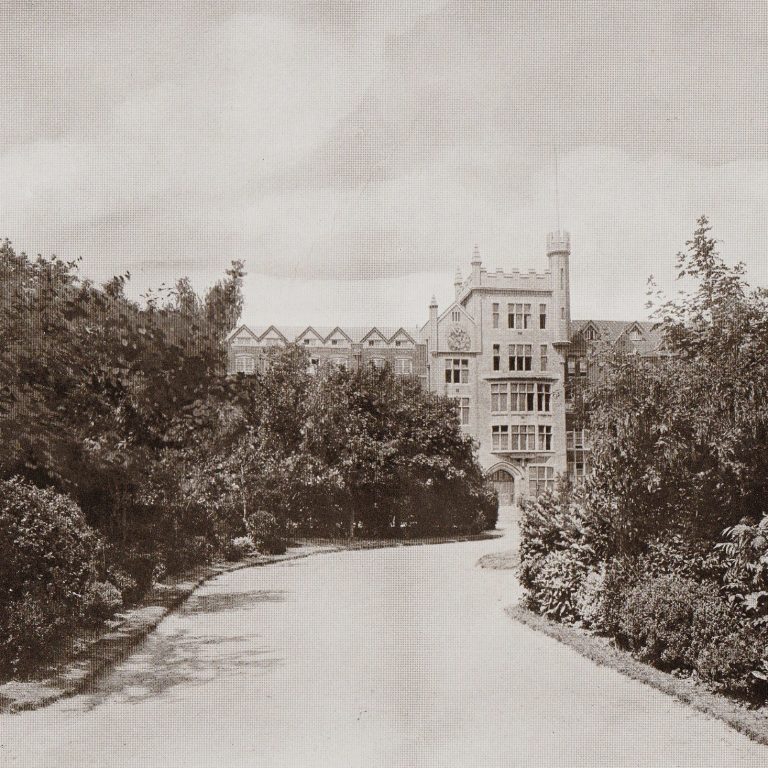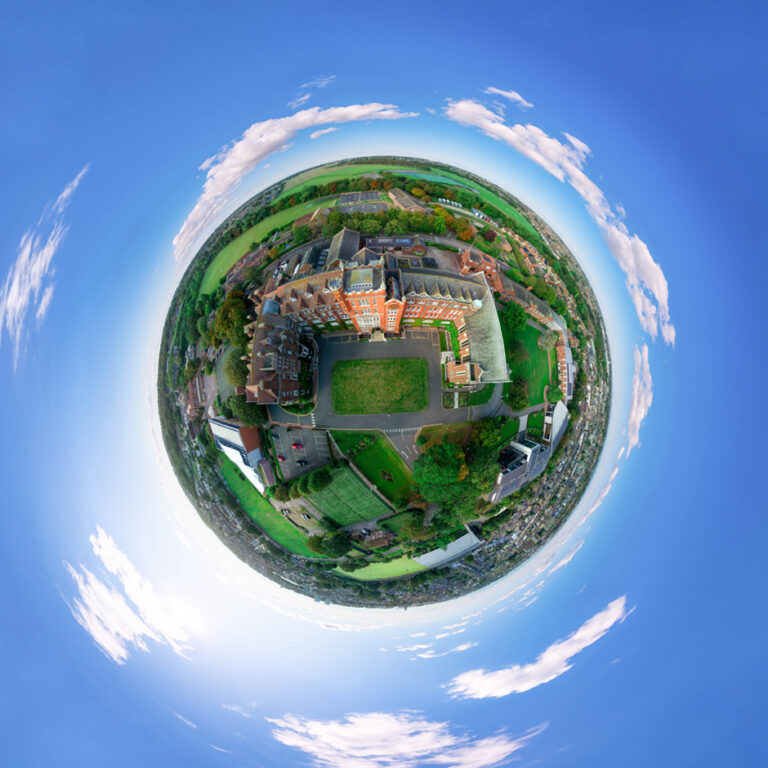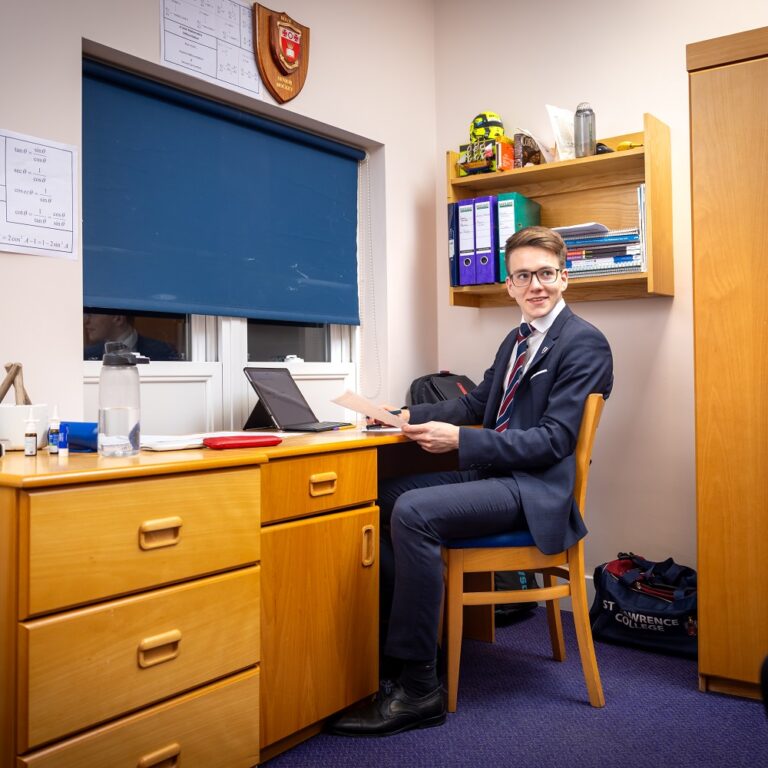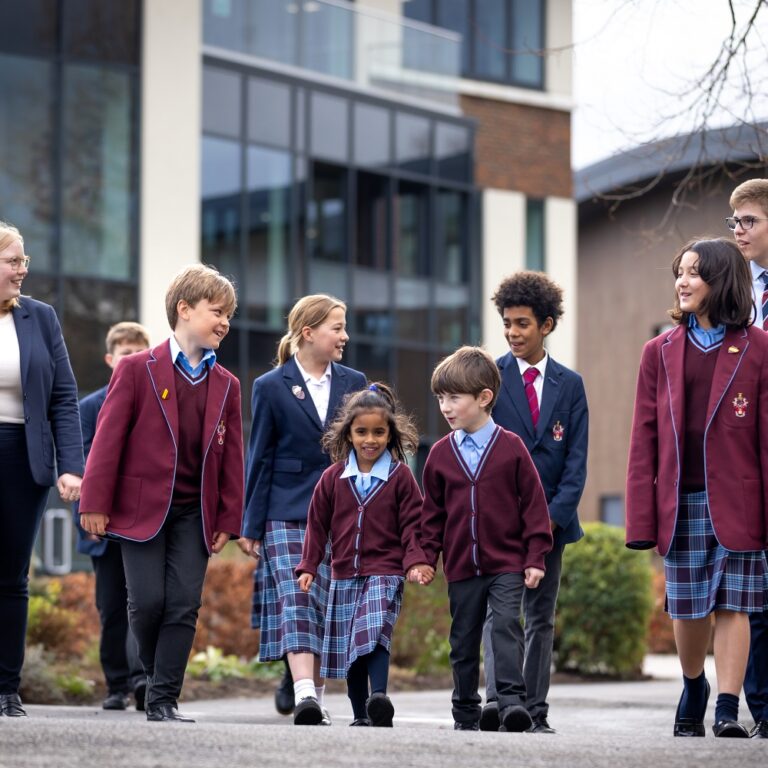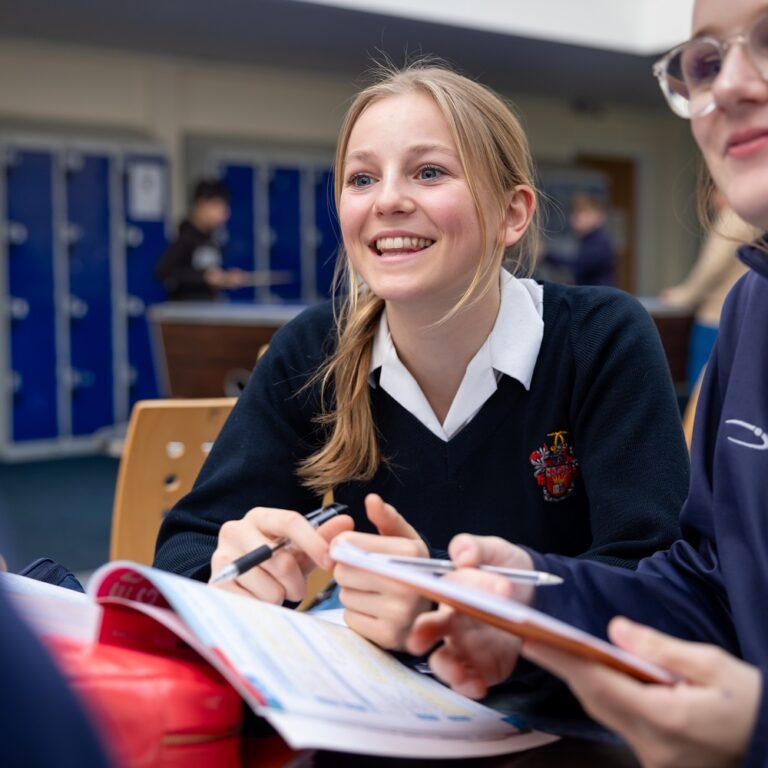A structured phonics programme puts a strong emphasis on reading and writing skills, ensuring that most pupils exceed the expectations.
Explore-
▸
Nursery & Pre-Prep
-
▸
Prep
Beyond the curriculum we encourage our pupils to take on responsibility and they thrive on Leadership opportunities.
Explore -
▸
Senior
At St Lawrence College we offer a supportive, caring and challenging environment, founded on traditional Christian values, where children are given every opportunity to fulfil their potential.
Welcome to Senior School -
▸
Sixth Form
St Lawrence College aims for educational excellence, and nearly all of the Upper Sixth will continue to Higher Education at University.
Welcome to Sixth Form
History of Headmasters
Matthew Brown, Fifteenth Headmaster 2025-Present Day
Barney Durrant, Fourteenth Headmaster 2020-2025
Prior to his appointment as Head of St Lawrence College, Ramsgate, Barney Durrant was Principal Deputy Head at Harrow International School Hong Kong, where he served for 7 years. This was preceded by 14 years at Stowe School, Buckingham, where he was Head of Geography before becoming a Housemaster.
As an Independent School boarder himself from the age of seven, Barney has a wealth of experience of the Sector. He studied Geography at University College London, before completing his Post Graduate Certificate in Education at the University of Cambridge. In addition to his academic achievements, which include his recent completion of a Masters in Educational Leadership and Management at the University of Nottingham, Barney is also a very talented sportsman; holding an Athletics Blue from Cambridge and both playing and coaching Rugby to a high level. In his spare time, he regularly competes in triathlon and cycling endurance events.
Antony Spencer, Thirteenth Headmaster, 2013-2020
Antony Spencer joined from Clifton College where he was a deputy and was appointed as Principal of the whole College. As well as being a teacher he was a Chartered Accountant and a graduate of Queen’s College, Oxford. Pupil numbers increased by 50% in the Senior School during his time to over 460 which necessitated the creation of two new Houses, Deacon and Clifford. New buildings included the second astroturf and the Canon Perfect Centre. A renewed academic focus saw Oxbridge success again and the School also re-established a very strong sporting reputation, especially in hockey, becoming national champions twice.
Mark Aitken, Twelfth Headmaster, 2004-2012
Previously, Mark Aitken had been the Chaplain at Sherborne School. On becoming Headmaster his challenges were several, to increase the number of students, maintaining high academic standards, improve the school’s infrastructure and bring the school community together. During his tenure, he increased pupil numbers substantially and he drove forwards significant development in the school’s facilities; Kirby House (for years 7 & 8), a Sports Hall, conversion of the old Taylor Hall into a state of the art boarding accommodation (Bellerby) for girl boarders, a new theatre and the completion of the upgrading of boys’ boarding accommodation. Mark Aitken was an impressive speaker, popular with staff and pupils. The school flourished under his leadership.
Mark Slater, Eleventh Headmaster, 1996-2004
Mark Slater came from Wellington as Housemaster and Head of Spanish. Numbers in boarding struggled during this period although the Day School numbers increased. The financial stresses at the time prevented him from improving facilities as he sought. However, he was able to initiate the upgrading of boys’ boarding. Also, he oversaw the restructuring of the top of the Junior School and Cameron House. He moved on to become Headmaster of The Leys in Cambridge.
John Binfield, Tenth Headmaster, 1983-1996
John Binfield became Headmaster in 1983 following a long and successful teaching career at St Lawrence College which started in the 1960s and included being the Head of English, Housemaster of Lodge, Second Master (from 1977) and a year as Master of the Junior School. He was a renowned producer of school Shakespearean plays. He had a clear focus on high academic performance at St Lawrence. One of his first notable achievements was to make the School fully co-educational following the earlier introduction of girls into the Sixth Form; pupil numbers increased to over 400 during his tenure. The introduction of a superb Design and Technology Centre and the school’s first ‘astroturf’ hockey pitch were just two of the major projects he oversaw.
Peter Harris, Ninth Headmaster, 1969-1983
Previously he was a Housemaster at Haileybury. He oversaw the steady move towards a co-educational school. In 1977 St Lawrence started to take in its own 6th form girls (Sutton, then Bellerby House). Tragically, Peter Harris’s wife Joan died in his last year as Headmaster.
Rev Ronald, Perfect Eight Headmaster, 1938-1969
As a pupil, Master of the Junior School and Headmaster of St Lawrence College, Canon ‘Dick’ Perfect’s life was rooted in the School. He was involved in the wartime evacuation of the School to Seaford College and Courteenhall and their subsequent post-war reunification in Ramsgate. Under his guidance the war-torn buildings were reconstructed into the more modern St Lawrence College that can be seen today. His 25 year development plan saw the construction of the main Classroom Block and Northgate Porters Lodge; Masters’ houses, squash courts, a new Sanatorium, the Taylor Hall and gymnasium, new classrooms and the Roberts Hall in the Junior School. He added another boarding House in 1946, Courtenay, and Cameron in 1965 for boys aged 11-13 from maintained schools. In 1968 he accepted girls for A Level courses from the nearby St Stephen’s College.
Rev Basil Brackenbury, Seventh Headmaster, 1928-1937
Rev. Brackenbury introduced the House names of Grange, Tower, Manor and Lodge and added Newlands as a Day House. He replaced the College’s straw hats with House caps. The Dining Hall was panelled in oak and the gallery added in 1930. Furthermore the playing fields were enlarged through the generosity of S.E. Cameron and opened a new Science block in 1933 thanks to an anonymous donor. Although numbers fell during this period, it was recognised that his shrewd management kept the College solvent during the Depression.
Rev John Taylor, Sixth Headmaster, 1918-1928
Educated at Pembroke College Cambridge and Chaplain at Ridley Hall, Rev. Taylor was tasked with bringing the Junior and Senior Schools back to Ramsgate after evacuation. He furthered the School’s reputation for religious traditions and numbers increased to a record of over 300 pupils. During his tenure, the Railways made a compulsory purchase of School land which enabled the construction of the Chapel in 1927. It was also at this time that the College achieved a national reputation hockey. The 1927 team contained six future Hockey Blues and two internationals.
Rev Edward Sherwood, Fifth Headmaster, 1906 - 1918
Educated at Magdalen College Oxford, Mr Sherwood was an enthusiastic naturalist and scientist whose tenure also oversaw a distinguished number of achievements in football, hockey and athletics – three OLs represented Great Britain in the 1908 Olympics. The Dining Hall was opened in 1910. After the infamous First World War zeppelin bombing raid on Ramsgate in 1915, Rev Sherwood was reputed to have told his assembled boys in the Hall – “The night’s entertainment is over. There will be no encore. Go to bed.” In 1916 the Junior Schooll went to Carmarthen and the Senior School to Chester.
Mr Charles Morris, Fourth Headmaster, 1899-1906
After ten years as Headmaster of the Junior School, Mr Morris was considered the best man to consolidate the achievements of his predecessor. He oversaw the construction of the central Deacon Memorial Tower in 1905 and the School’s change of name to ‘St Lawrence College’. Scholarships and Exhibitions increased during his time, hockey became the principal game and he dispensed with unnecessary formalities such as the wearing of silk hats on Sundays. He was a popular Headmaster with a reputation for creating a family atmosphere, organisation, economy and efficiency.
Rev Francis William Tracy, Third Headmaster, 1891-1899
Mr Tracy joined with previous experience of Headmastership and was appointed to restore stability to the College. He remodelled it on Public School lines with four Boarding Houses (light and dark red, and light and dark blue) and also extended the grounds by adding Newlands Farm, the Hollicondane Park estate and the Junior School playing fields. He oversaw the building of the laundry, gymnasium, walls around the college, and the tunnel from the Junior School to the playing fields. The redbrick Canon Hoare Memorial Wing was added in 1895 but funds ran out before the central tower could be added. Mr Tracy redesigned the College crest and shield taken from the D’Auquier family and replaced their motto ‘Omnia pro bono’ with ‘In bono vince’ (‘overcome evil with good’). It is recorded that Mr Tracy was a shy man with a commanding manner. He recruited good teachers and numbers of pupils rose to 160 in 1899.
Rev. Edward Harrison Askwith, Second Headmaster 1889-1891
Mr Askwith was appointed Headmaster at the age of 25 after just one year’s teaching experience. Educated at Trinity College Cambridge, he was a keen scholar and had ‘progressive’ ideas about education. He reduced the School timetable, abolished external examinations, extended the sports grounds and introduced the School Concert and Speech Day. He was shy with parents. Within two years, pupil numbers had reduced from 200 to 59. “Calm were the waters” sighed one College journalist when he left.
Rev. Emile D’Auquier, First Headmaster, 1879-1889
Educated at Clare College, Cambridge and ordained in 1880, Mr D’Auquier, a Hugenot, established the religious traditions of the College. He developed the South Eastern College from rented houses and 5 pupils in 1879 to his own designed building in 1884 for 125 pupils. He purchased the land and building of the Junior School in 1884 from his own funds. He had a commanding and flamboyant presence in spending money too rashly and driving his horse and trap at breakneck speed through Ramsgate.

